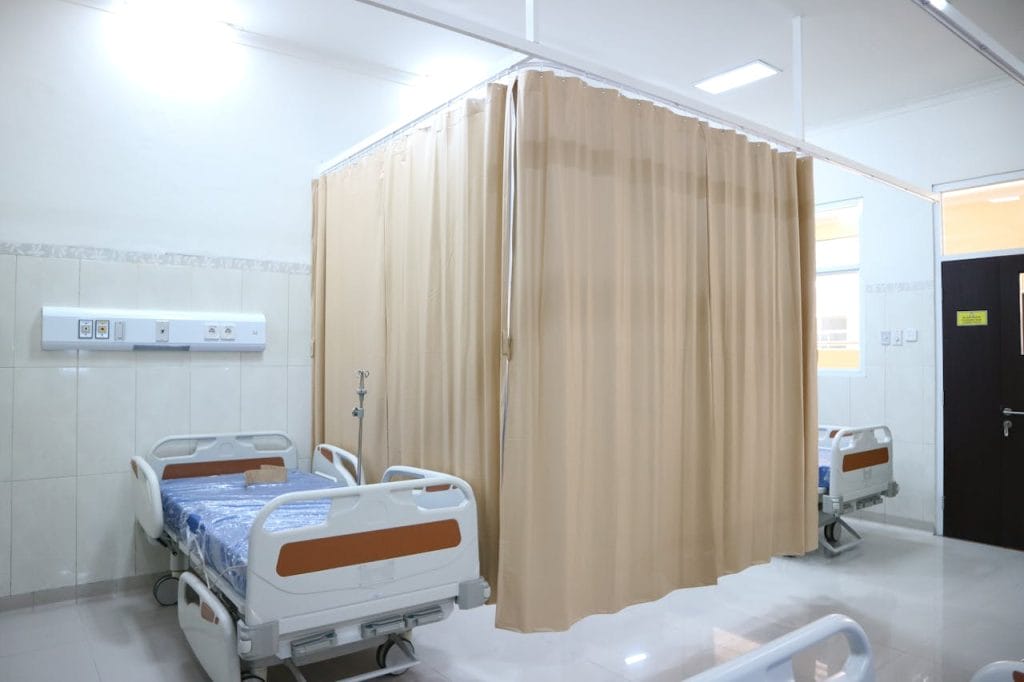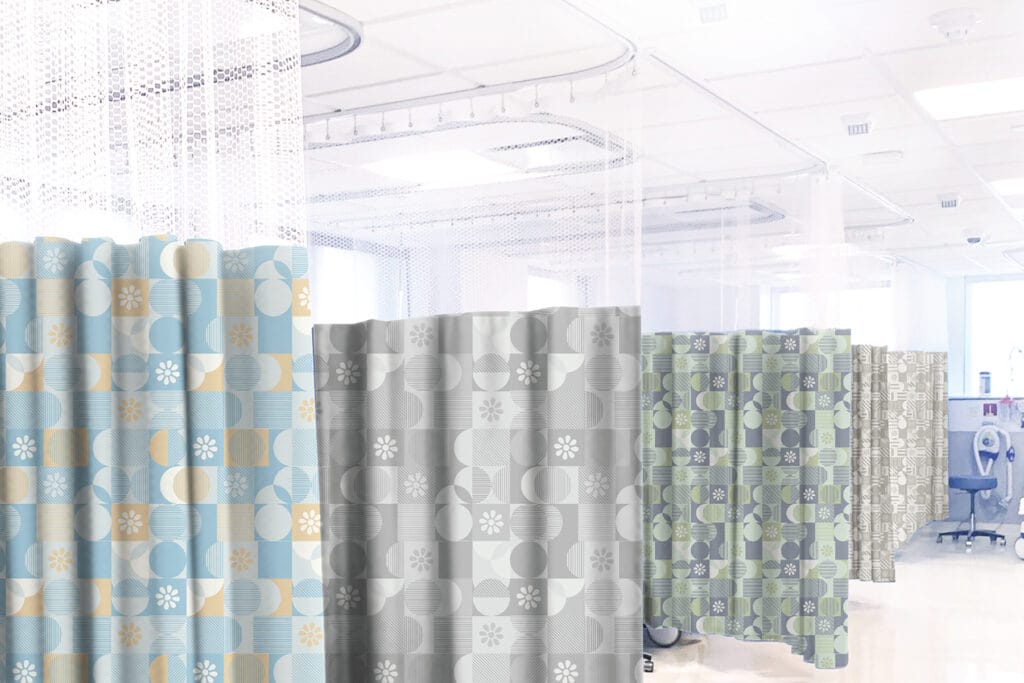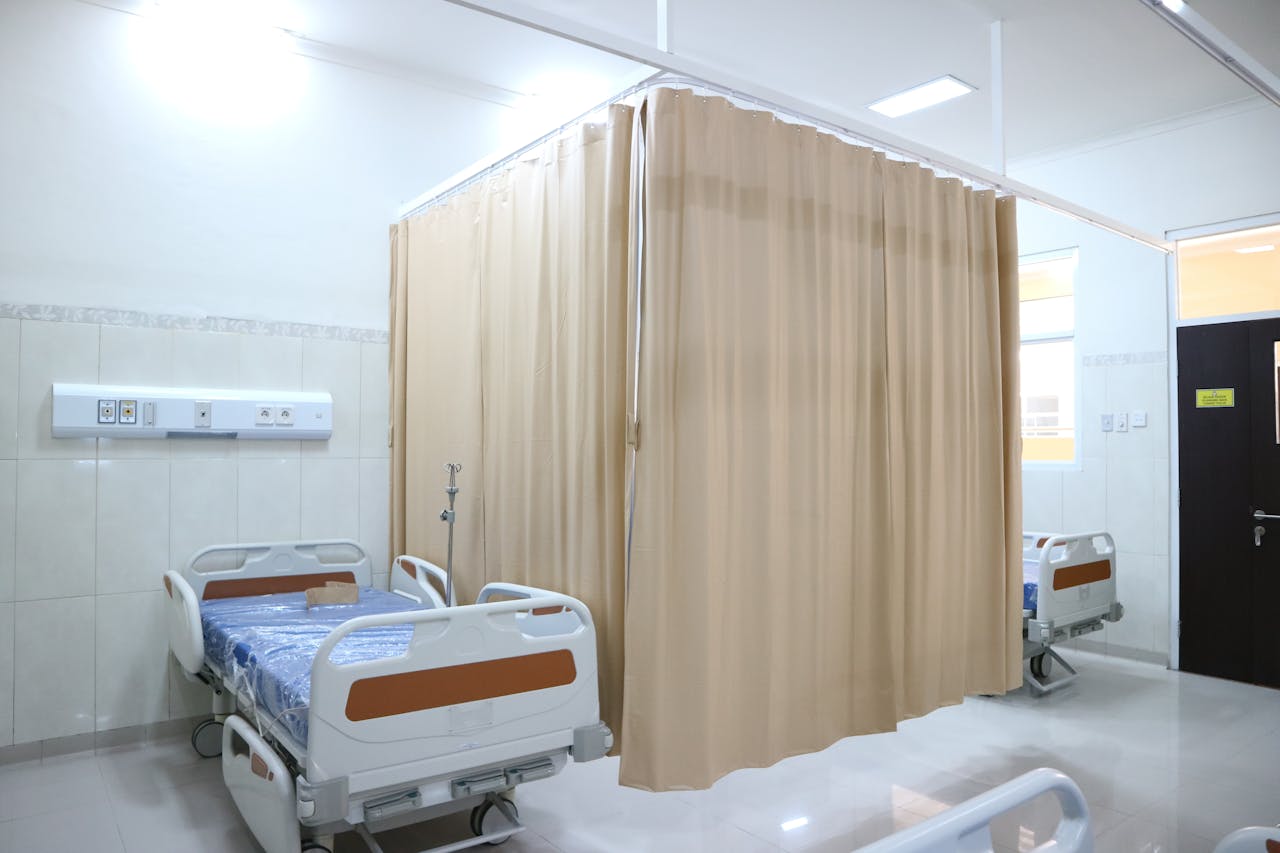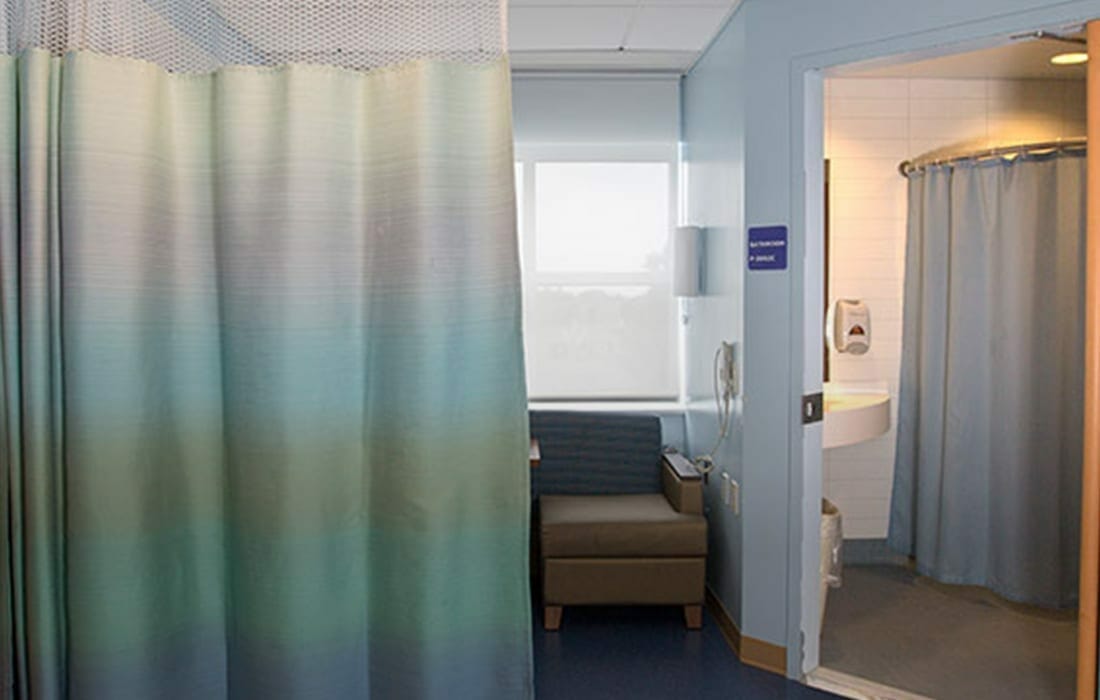Privacy is a fundamental aspect of hospital environments, influencing patient comfort, dignity, and infection control. Healthcare facilities have long relied on cubicle curtains to provide privacy and separation in shared spaces. However, innovations in hospital privacy solutions have introduced hand shield curtains, an alternative designed to improve hygiene and reduce contamination risks.
Both solutions have their advantages and drawbacks, making it essential for healthcare administrators to carefully evaluate which is best for their facility. In this guide, we’ll compare cubicle curtains and hand shield curtains to help hospitals make an informed decision while maintaining compliance with privacy and safety regulations.

The Role of Privacy in Healthcare Settings
Hospital privacy goes beyond patient comfort—it plays a vital role in infection control, regulatory compliance, and operational efficiency. Effective privacy solutions must balance:
- Hygiene and infection control
- Ease of use for staff and patients
- Durability and maintenance
- Compliance with healthcare regulations
Choosing between cubicle curtains and hand shield curtains requires a thorough understanding of their unique characteristics.
What Are Cubicle Curtains?
Design and Functionality
Cubicle curtains are fabric dividers commonly used in hospitals to separate patient areas. They are typically hung from a hospital curtain track system, allowing easy movement and adjustment. These curtains provide a flexible and cost-effective way to ensure privacy in shared rooms, emergency departments, and outpatient clinics.
Advantages of Cubicle Curtains
✔ Cost-Effective: Affordable and widely used in healthcare settings. ✔ Customizable: Available in various colors, designs, and sizes. ✔ Flexible Privacy Control: Can be easily opened or closed to adjust privacy levels. ✔ Soft and Comfortable: Reduces noise and creates a more comfortable patient environment.
Drawbacks of Cubicle Curtains
✖ Infection Control Concerns: Fabric surfaces can harbor bacteria and viruses if not regularly sanitized. ✖ Maintenance Intensive: Requires frequent laundering or replacement to remain compliant with infection control protocols. ✖ Manual Operation: Must be pulled open or closed, increasing contact points and potential contamination.
To maintain hygiene standards, hospitals often implement a Curtain Compliance Program that ensures systematic cleaning and replacement of cubicle curtains. Learn more about how hospitals can improve compliance here.
What Are Hand Shield Curtains?
Design and Functionality
Hand shield curtains are a modern alternative to traditional cubicle curtains. Made from antimicrobial materials, they provide a barrier between patients while minimizing contamination risks. These curtains are designed with infection control in mind, often incorporating disposable or easy-to-clean materials.
Advantages of Hand Shield Curtains
✔ Enhanced Infection Control: Made from antimicrobial materials that prevent bacterial growth. ✔ Easy to Clean: Some models are disposable, while others can be wiped down quickly. ✔ Touch-Free Options: Certain designs allow for hands-free operation, reducing contact points. ✔ Regulatory Compliance: Meets stringent healthcare hygiene standards.
Drawbacks of Hand Shield Curtains
✖ Higher Initial Cost: More expensive than traditional cubicle curtains. ✖ Limited Flexibility: May not offer the same level of privacy customization as fabric curtains. ✖ Less Comfortable: Some patients and staff may find them less visually appealing or welcoming.
Comparing Cubicle Curtains and Hand Shield Curtains
| Feature | Cubicle Curtains | Hand Shield Curtains |
|---|---|---|
| Privacy Level | High | Moderate to High |
| Hygiene & Infection Control | Moderate (Requires frequent cleaning) | High (Antimicrobial & disposable options) |
| Cost | Lower initial cost, higher maintenance | Higher initial cost, lower maintenance |
| Ease of Use | Manual operation | Hands-free or minimal touch |
| Durability | Requires regular replacement | Long-lasting and easy to sanitize |
| Regulatory Compliance | Requires strict cleaning schedules | Meets infection control regulations easily |
Which Privacy Solution Is Best for Your Hospital?
The right choice depends on the specific needs of the healthcare facility. Here’s a quick decision guide:
- Choose Cubicle Curtains if: Your hospital prioritizes affordability, comfort, and flexible privacy control while implementing a strong cleaning protocol.
- Choose Hand Shield Curtains if: Infection control is the top priority, and your facility can invest in long-term hygiene solutions with minimal maintenance.
Integration with Other Privacy Solutions

Hospitals are increasingly combining different privacy solutions to create efficient, patient-friendly environments. Some facilities use a mix of cubicle curtains, hand shield curtains, and shades to optimize both privacy and infection control.
Understanding the benefits of curtains versus shades can help hospitals make better decisions about patient privacy. Read more about this comparison here.
Both cubicle curtains and hand shield curtains offer distinct advantages for hospital privacy. While cubicle curtains are a cost-effective and flexible option, hand shield curtains provide superior infection control with low-maintenance benefits. Healthcare administrators must weigh their facility’s privacy, hygiene, and budgetary needs to determine the best solution.
At HAIGuard™, we help hospitals find the most effective privacy solutions while maintaining compliance with industry standards. Whether choosing cubicle curtains or hand shield curtains, a well-planned privacy strategy ensures safer, more efficient hospital environments for patients and staff alike.








